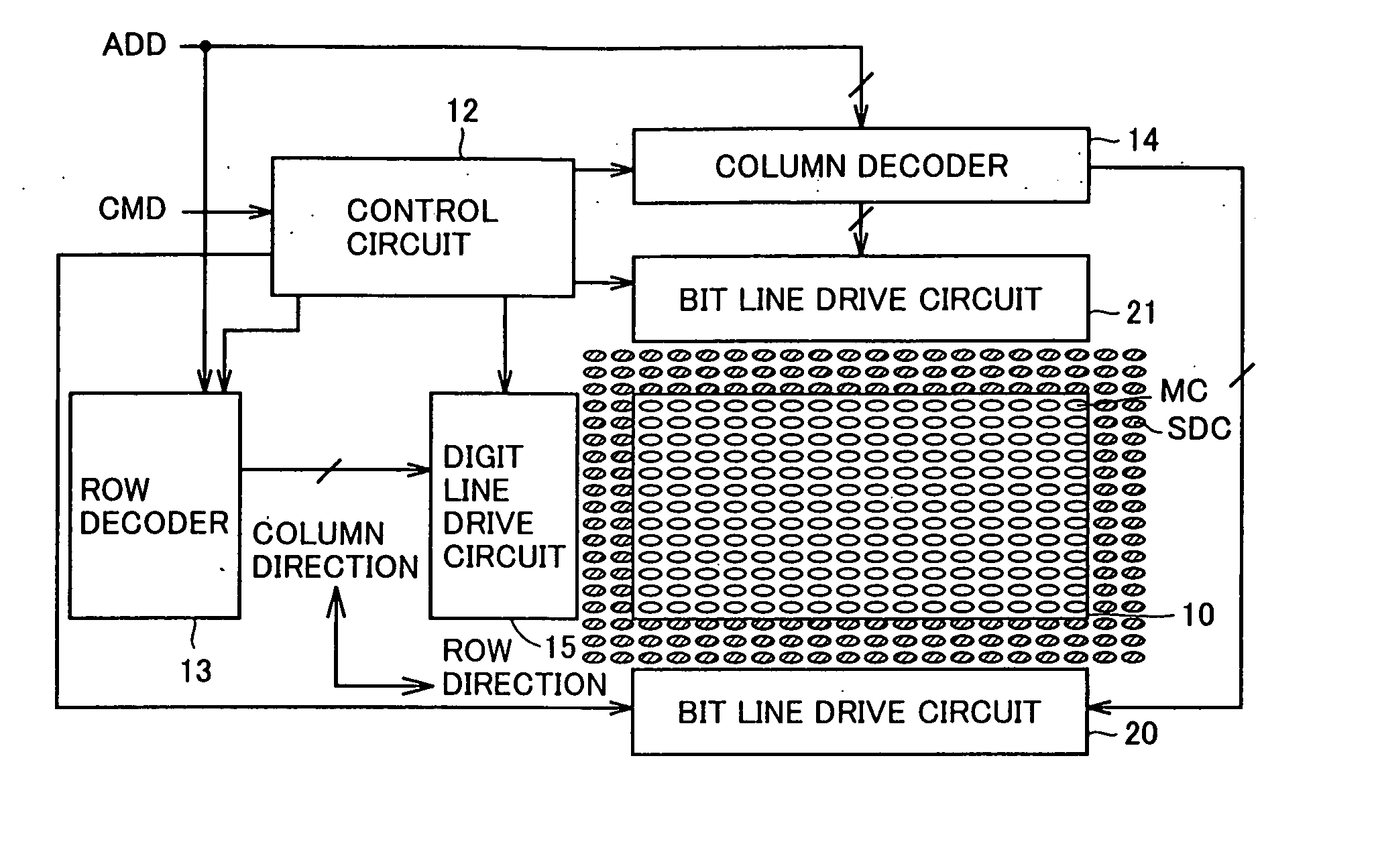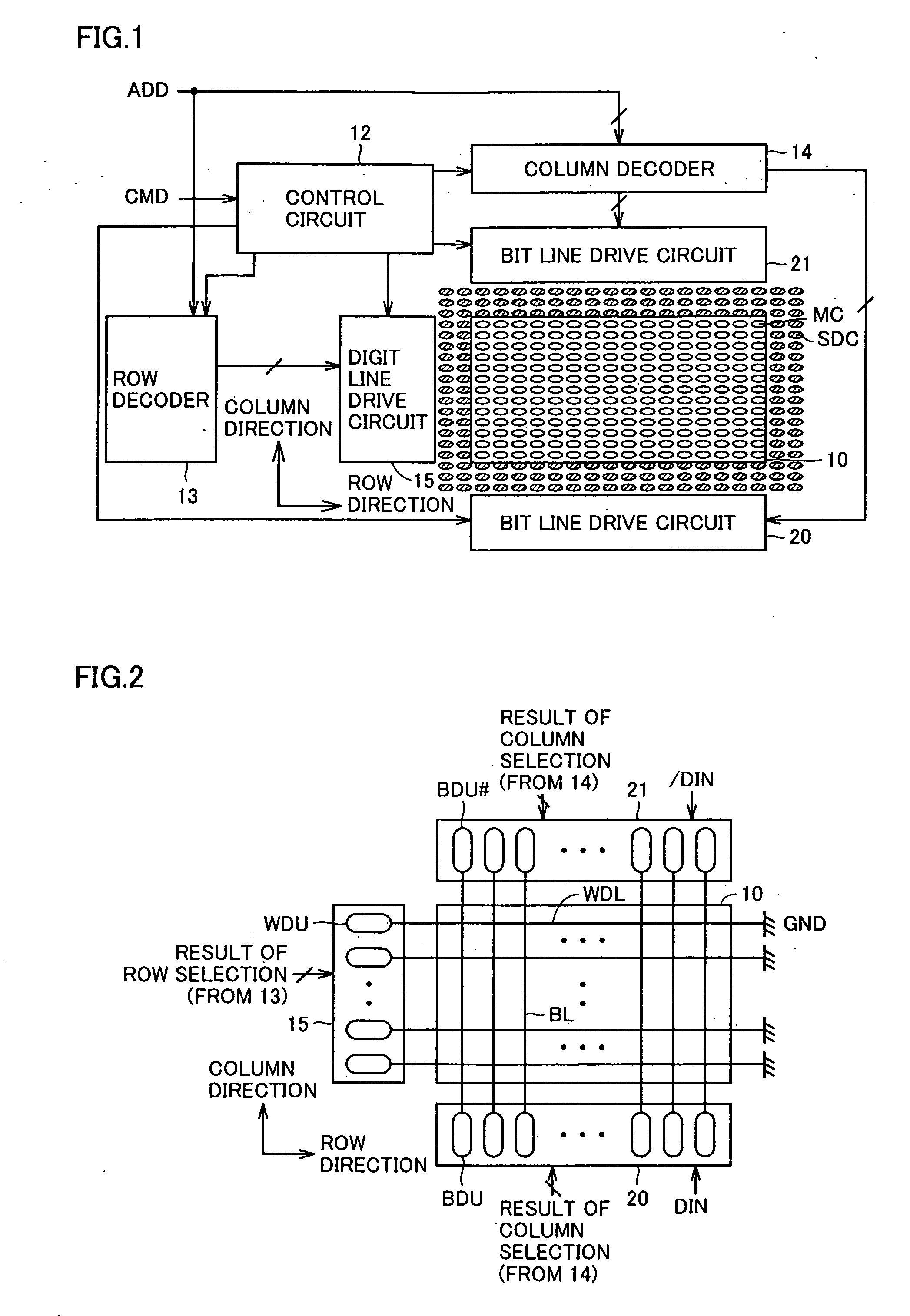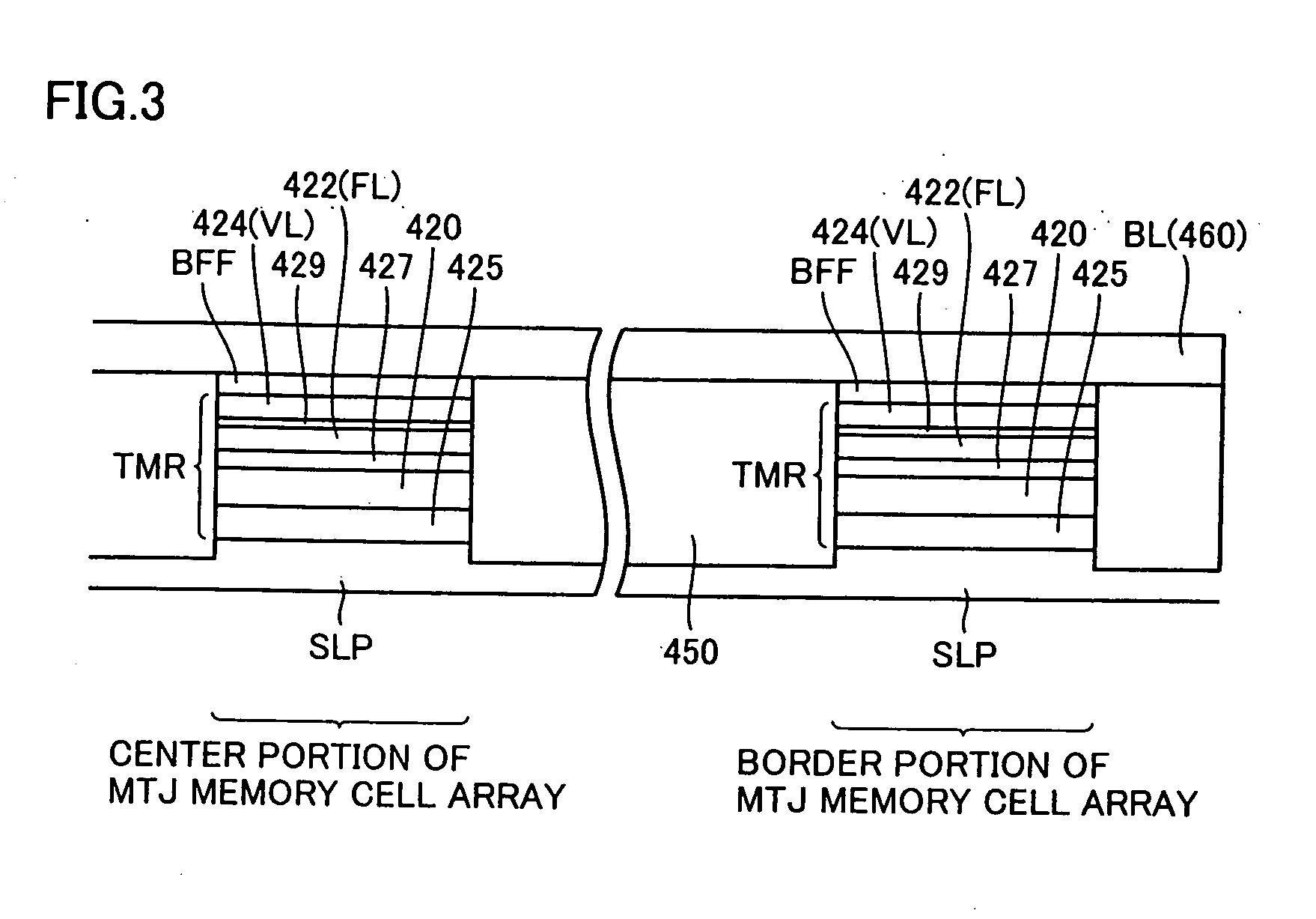Thin film magnetic memory device and semiconductor integrated circuit device including the same as one of circuit blocks
a magnetic memory and integrated circuit technology, applied in semiconductor devices, digital storage, instruments, etc., can solve the problems of non-uniform thickness of finished straps, non-uniform thickness of films, and difficulty in uniform manufacturing of mtj memory cells within memory cell arrays, so as to achieve efficient magnetization, suppress erroneous data writes due to magnetic noise, and uniform dimensions, shapes and structures of magnetic memory cells
- Summary
- Abstract
- Description
- Claims
- Application Information
AI Technical Summary
Benefits of technology
Problems solved by technology
Method used
Image
Examples
first embodiment
[0101] A configuration for ensuring the uniformity of the memory cell pattern (memory cell dimensions, forms and structures) within a memory array wherein MTJ memory cells for data storage are arranged is described in a first embodiment.
[0102] With reference to FIG. 1, an MRAM device according to the embodiment of the present invention is provided with an MTJ memory cell array 10 wherein MTJ memory cells MC for data storage are arranged in sequence in a matrix. Here, in the following, MTJ memory cells arranged within MTJ memory cell array 10 that becomes an access object in accordance with an address signal ADD is specifically referred to as “normal memory cells” in order to be distinguished from the shape dummy cells described below in the present specification.
[0103] The MRAM device is further provided with a control circuit 12 for controlling the entire operation of the MRAM device in response to a control signal CMD, a row decoder 13 for carrying out a row selection of the nor...
first modification
of First Embodiment
[0135] Though a case is shown in the first embodiment wherein shape dummy cells SDC are used in an MTJ memory cell array having a general configuration, as shown in FIGS. 1 and 3, shape dummy cells SDC can be used in the same manner in other memory cell array configurations.
[0136] With reference to FIG. 6, a plurality of MTJ memory cells MC (tunneling magneto-resistance elements TMR) arranged in a matrix in MTJ memory cell array 10 is divided into a plurality of row blocks RB(1) to RB(M) (M: integer of 2, or greater) in the row direction in a first modification of the first embodiment. Each of row blocks RB(1) to RB(M) has L memory cell rows (L: integer of at least 2). FIG. 2 shows an example having a configuration wherein L=4. Here, in the following, row blocks RB(1) to RB(M) are generically and simply referred to as row blocks RB.
[0137] Straps SRP arranged as signal lines in the column direction are provided so as to correspond to row blocks RB(1) to RB(M), re...
second modification
of First Embodiment
[0152] An example of the layout of shape dummy cells in the case where the MTJ memory cell array is broken down into a plurality of blocks is shown in a second modification of the first embodiment.
[0153] With reference to FIG. 8, MTJ memory cell array 10 is arranged so as to be divided into a plurality of memory blocks 11 in the second modification of the first embodiment. Normal memory cells MC are arranged in a matrix in each memory block 11. Correspondingly, digit line drive circuits 15 and bit line drive circuits 20 and 21 are arranged so as to be divided to correspond to memory blocks 11, respectively. Here, the configuration of the MTJ memory cell array is not specifically limited and the configurations shown in FIG. 4 and in FIG. 7 can be used.
[0154] Shape dummy cells SDC are arranged so as to be in sequence with normal memory cells MC in the row direction and in the column direction in respective memory blocks 11 in the configuration the second modificat...
PUM
 Login to View More
Login to View More Abstract
Description
Claims
Application Information
 Login to View More
Login to View More - R&D
- Intellectual Property
- Life Sciences
- Materials
- Tech Scout
- Unparalleled Data Quality
- Higher Quality Content
- 60% Fewer Hallucinations
Browse by: Latest US Patents, China's latest patents, Technical Efficacy Thesaurus, Application Domain, Technology Topic, Popular Technical Reports.
© 2025 PatSnap. All rights reserved.Legal|Privacy policy|Modern Slavery Act Transparency Statement|Sitemap|About US| Contact US: help@patsnap.com



